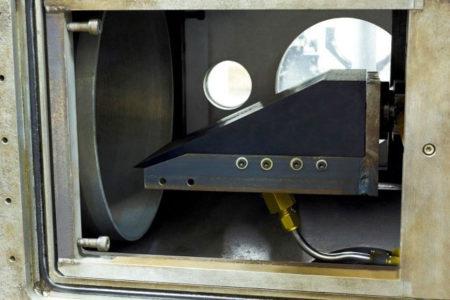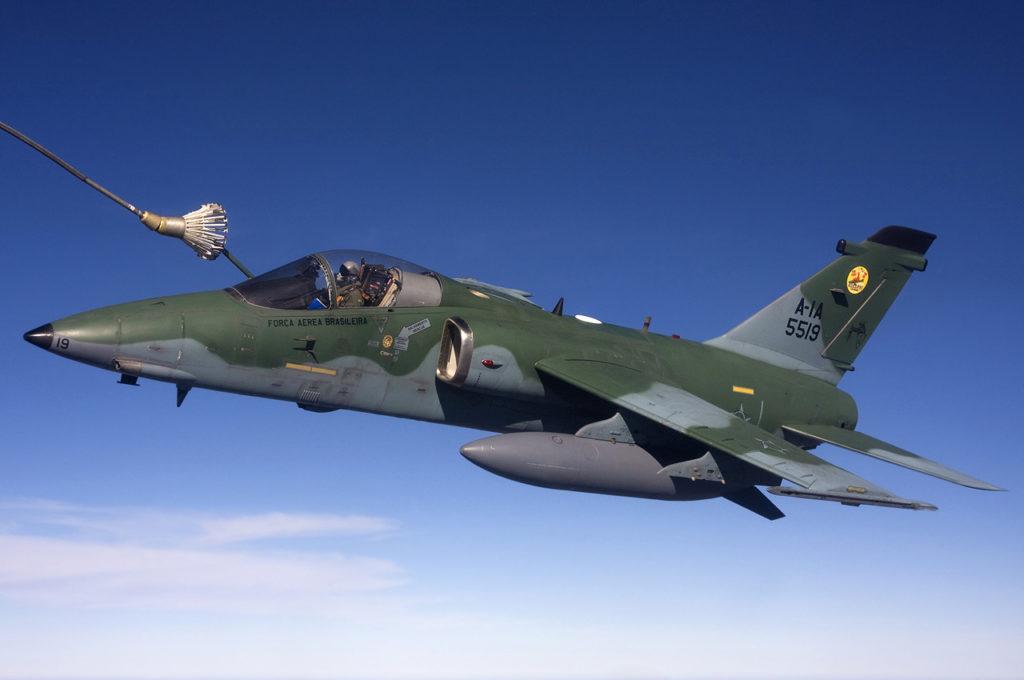 The Instituto de Estudos Avançados (IEAv), the Brazilian Air Force’s Institute of Advanced Studies, has partnered with 3D printer manufacturer Stratasys to efficiently create robust aircraft components that are on par with the Air Force’s strict requirements.
The Instituto de Estudos Avançados (IEAv), the Brazilian Air Force’s Institute of Advanced Studies, has partnered with 3D printer manufacturer Stratasys to efficiently create robust aircraft components that are on par with the Air Force’s strict requirements.
Specifically, the IEAv is primarily utilizing the Stratasys Fortus 900mc to manufacture complex and sophisticated aircraft parts. The Stratasys team states that the integration of 3D printing solutions into the IEAv’s existing manufacturing methods allows the institutions to produce test models and components within a week.
Without 3D printing, most aircraft manufacturers and air forces are forced to rely on traditional manufacturing methods and systems, which could take months due to the shipping process and inefficient batch production strategies. The Stratasys team stated that the Brazilian Air Force was forced to depend on a process that could take up to six months for the creation of test models.
“We needed the speed to accelerate our experiments and get practical results for the production of test models and components, which made us research for alternatives,” said Dr. Israel da Silveira Rego, assistant researcher of the Professor Henry T. Nagmatusu Aerodynamics and Hypersonic Division, IEAv.
 Currently, the IEAv is implementing a particular production method based on fused deposition modeling (FDM) technology,
Currently, the IEAv is implementing a particular production method based on fused deposition modeling (FDM) technology,
which was created by Stratasys founder Scott Crump two decades ago. Since then, Stratasys has continued to lead research in the field and provide commercial applications of the FDM technology.
So far, the IEAv has experienced significant improvement in its manufacturing process and experiments. The cost-efficient and ultra-fast method of FDM technology-based 3D printing has allowed IEAv to produce important aircraft parts on demand, optimizing the entire testing phase in terms of time consumed and budget.
“Using Stratasys 3D printing, we can now improve and expand our research productivity due to the flexibility it provides, and the way it enables us to optimize our resources,” noted Dr. Rego.
The IEAv development team is already beginning to test real-world applicability of FDM technology-printed aircraft parts. Once they pass the strict requirements and evaluation phase of the Brazilian Air Force, the 3D printed components will be ready for commercial distribution. More importantly, explained Dr. Antonio Carlos de Oliveira, senior researcher at the IEAv and FINEP research project manager, 3D printing technology further enables the institution to test out various projects and test models without inserting a serious amount of capital.
 Previously, it was virtually impossible for the Brazilian Air Force to experiment with hybrid products and incomplete proposals as traditional manufacturing and shipping methods required substantial increase in budget. However, with 3D printing, Oliveira states that the institution’s flexibility to take on innovative and experimental projects has expanded.
Previously, it was virtually impossible for the Brazilian Air Force to experiment with hybrid products and incomplete proposals as traditional manufacturing and shipping methods required substantial increase in budget. However, with 3D printing, Oliveira states that the institution’s flexibility to take on innovative and experimental projects has expanded.
“This new form of prototyping with 3D printing is giving us greater flexibility, reliability and speed, at a significantly lower cost. 3D printing technology is redefining our laboratory limits, opening up new possibilities and aspects of research. In addition, we gain the added benefit of ensuring the secrecy of our innovations and the security of the aerospace and defense projects that we develop,” said Dr. Oliveira.
Discuss in the Brazilian Air Force forum at 3DPB.com.
[Source: Stratasys]Subscribe to Our Email Newsletter
Stay up-to-date on all the latest news from the 3D printing industry and receive information and offers from third party vendors.
Print Services
Upload your 3D Models and get them printed quickly and efficiently.
You May Also Like
U.S. Navy Lab Uses 3D Printing to Reduce Tooling Lead Time By Over 90%
The F-35 Lightning II Joint Program Office (JPO), responsible for life-cycle management of the key fifth-generation joint strike fighter (JSF) system used by the U.S., its allies, and its partners,...
Etsy Design Rule Change Reduces Selection of 3D Printed Goods
Online marketplace Etsy has implemented a rule change requiring all 3D printed goods on the site to be original designs. The update to the site’s Creativity Standards states, ¨Items produced using...
Honeywell Qualifies 6K Additive’s Nickel 718 for 3D Printed Aerospace & Defense Parts
6K Additive is renowned for manufacturing sustainable additive manufacturing (AM) powder, and offers a wide portfolio of premium metal and alloy powders that include titanium, copper, stainless steel, and nickel,...
MetalWorm Sells WAAM Systems to Research Institutes in Brazil and Malaysia
Turkish WAAM firm MetalWorm has sold a system in Malaysia and another in Brazil. This is an excellent example of a few emerging trends in additive. Firstly, WAAM was experimented...

































